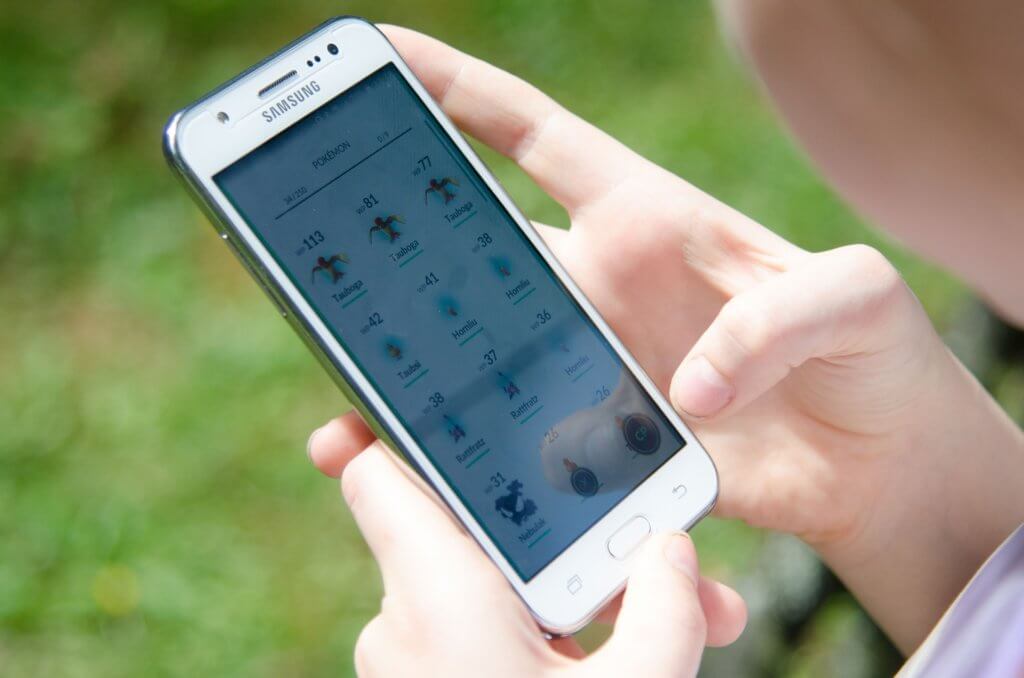By Kruakae Pothong and Sonia Livingstone
Back in 2016, the number of daily active users of Pokémon Go rocketed close to 45 million users within the first 2 weeks of its launch. The game has since been reported for both the joy and the horror it brings. But what exactly makes the game so appealing to so many people across the generations? Does the future Pokémon Go need augmented reality?
Research suggests that the secret ingredient to Pokémon Go’s success, especially as a family game, is its possibilities for joint media engagement. The opportunity for families and friends to enjoy “using media together and making meaningful connections” can shift negative perspectives about “screen time”- a heated terrain for debate between young people and those who care for them.
In our digital play consultation, youth participants, participating parents and professionals working with children and young people remembered Pokémon Go for its hybrid opportunities. They referred to this augmented reality mobile game as something that gets players out and about and physically interacting with their family and friends, rather than being fixated on the screen!
“Pokémon GO was a good example of a game that loads of friends of mine and their children got in with and whilst it’s very much off the radar now, people I know still go round and have a walk around and try and find Pokémon every now and again.”
Father of 2 children

Our digital play consultation further revealed that the perceived benefits of hybrid opportunities from games like Pokémon Go creates a common ground for young people and those who care for them on the contentious subject of screen time. Some of these benefits include physical exercises, as noted in the case of Nintendo Ring Fit and other recreational activities.
“I have a game on my Nintendo Switch…it’s a sports game that I;ve been playing for a couple of days. [My sister] does it too, and you have a ring and you have little thing you to attach to your leg and you put a controller in each. You can do different activities to defeat the monsters.”
Girl, 12 years old
“I like to watch [my foster son] on the Wii. It is not online; it’s physical; it’s enjoyable; they can play together… It was a PE lesson in the first lockdown … The children were absolutely amazing at setting up… numerous assault courses in the back garden with all kinds of things from the garden, chairs, watering cans, you name it.”
Foster parent
Some hybrid opportunities are designed intentionally by game developers. But children and young people also find ways to adapt digital games and create hybrid opportunities for themselves, by turning elements of their digital play into their physical play in the playground and vice versa.
“They talk about the online games that they play together… Among Us is our new thing… They play it in the playground. But then they also talk about it being played at home.”
Year 6 teacher
“Over lockdown, I’ve been baking a lot and stuff … sometimes with my sister…over a call… that was like really fun and it was a way we could connect …We were just using our phones. I think it was WhatsApp.”
Teen girl, 14 years old
What digital features support these child-invented hybrid opportunities? First and foremost is adaptability. This means that the design of the product – physical and digital – is open and easy to extend or adapt without changes to its core function. This open design supports flexible use. This implies that the next Pokémon Go does not necessarily require sophisticated technology or augmented reality. From what our participants have told us, the key ingredient for hybrid opportunities in digital play lies in adaptability and relatability of the available resources plus room for creativity. These resources, according to our consultation participants, can be anything from communication tools like Zoom and Discord to PlayStation 4 with PlayStation Virtual Reality Headset (PSVR). Equally important is safety and ethical treatment.
Last but not least, our participants called for no commercial exploitation and more effective content, contact and conduct moderation. In answering these calls for safe hybrid opportunities, we invite digital product and service providers to prioritise what people of all ages value about play. The reason is well summarised by a mother of two children and early-year support worker:
“If the value of play was better understood, then we wouldn’t be treating children as commodities and things that [drive kids] to race to become adults.”
This blog is part of the play series. You can view the rest of the blog series here.
Professor Sonia Livingstone OBE is a member of the UNCRC General Comment’s Steering Group, and leads the Digital Futures Commission. Sonia is Professor of Social Psychology in the Department of Media and Communications at the London School of Economics and Political Science. She has published twenty books on media audiences, media literacy, and media regulation, with a particular focus on the opportunities and risks of digital media for children and young people.

Dr Kruakae Pothong is a researcher at 5Rights and visiting research fellow in the Department of Media and Communications at London School of Economics and Political Science. Her current research focuses on child-centred design for digital services and children’s education data. Her broader research interests span the areas of human-computer interaction, digital ethics, data protection, Internet and other related policies.
